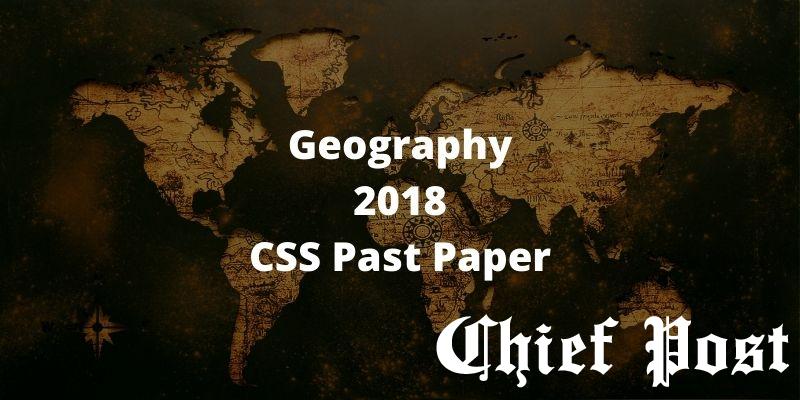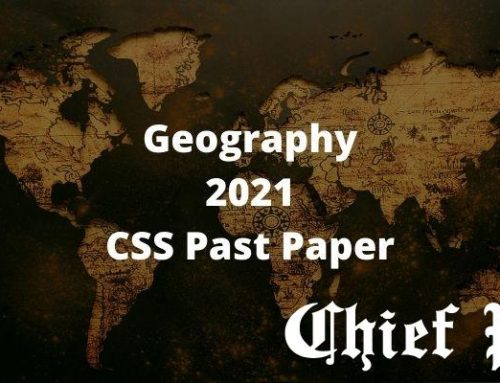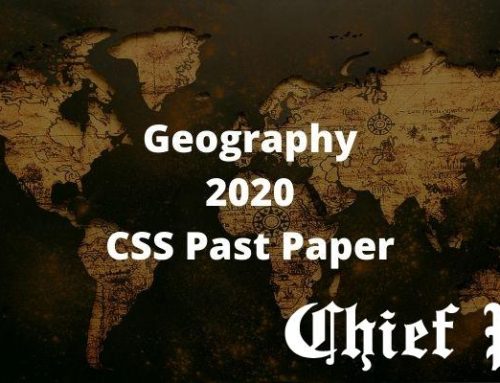
Geography 2018 — CSS Past Paper
FEDERAL PUBLIC SERVICE COMMISSION
COMPETITIVE EXAMINATION-2018 FOR RECRUITMENT TO POSTS IN BS-17
UNDER THE FEDERAL GOVERNMENT
GEOGRAPHY
TIME ALLOWED: THREE HOURS
PART-I(MCQS): MAXIMUM 30 MINUTES
PART-I (MCQS) MAXIMUM MARKS = 20
PART-II MAXIMUM MARKS = 80
NOTE:
- (i) Part-II is to be attempted on the separate Answer Book.
- (ii) Attempt ONLY FOUR questions from PART-II. Selecting TWO questions from EACH
SECTION. ALL questions carry EQUAL marks. - (iii) All the parts (if any) of each Question must be attempted at one place instead of at different
places. - (iv) Candidate must write Q. No. in the Answer Book in accordance with Q. No. in the Q.Paper.
- (v) No Page/Space be left blank between the answers. All the blank pages of Answer Book must
be crossed. - (vi) Extra attempt of any question or any part of the attempted question will not be considered.
PART-II
SECTION-I
Q. No. 2.
Discuss Plate Geography in the light of Plate Tectonics theory and discuss with examples impact of plate movements on development of land forms. (20)
Q. No. 3.
What is Isostasy? Discuss differences between Airy’s and Pratt’s concepts with a critical discussion on Global Isostatic Adjustment. (20)
Q. No. 4.
What are air masses and fronts? How are they classified? Discuss their impact on world weather. (20)
Q. No. 5.
Give classification of hazards and discuss steps taken in Pakistan to monitor, mitigate and manage natural disasters. (20)
SECTION-II
Q. No. 6.
What is the difference between traditional and modern approaches to planning for Tourism as per opinion of Geographers? Discuss with reference to the industry in Pakistan. (20)
Q. No. 7.
What are Development Indicators? How are they related to Social and Economic Indicators? Discuss with reference to welfare approach in Human Geography. (20)
Q. No. 8.
Write short notes on any TWO of the following: (10 each)
(a) Malthusian theory of Population Growth
(b) Weber’s theory of Industrial Location
(c) Karst topography
(20)
*************










